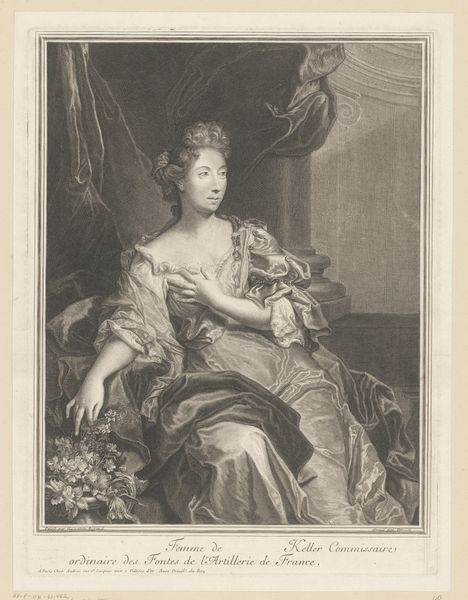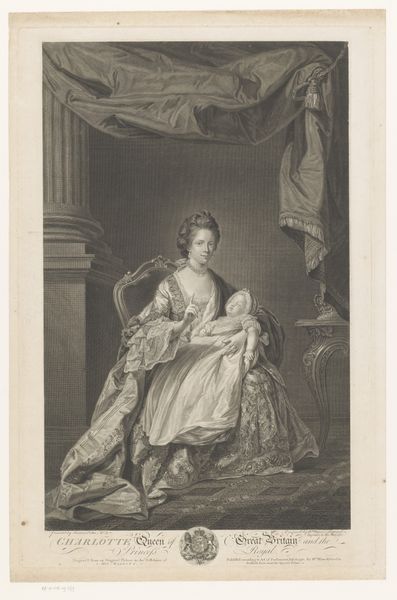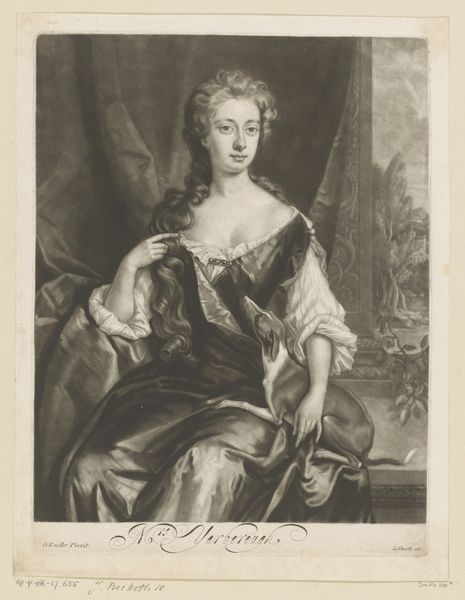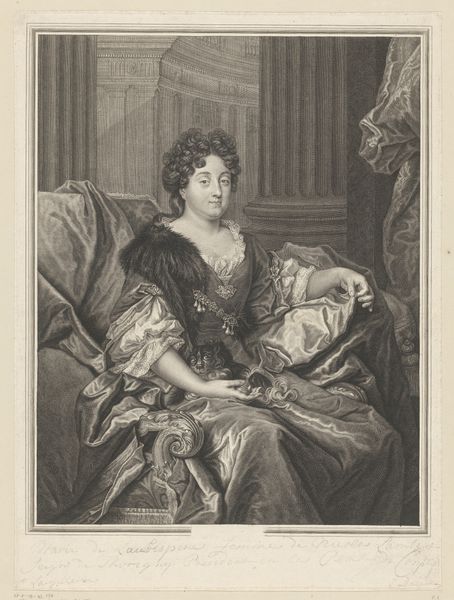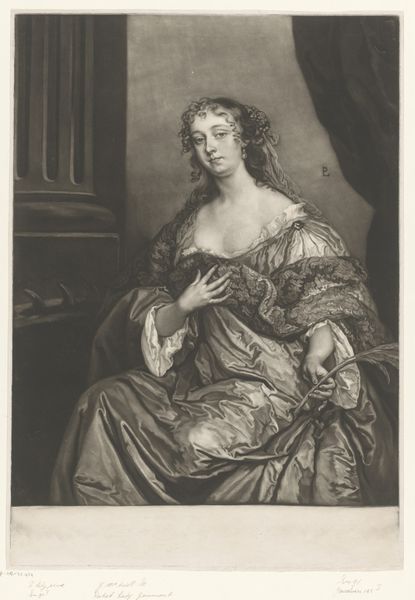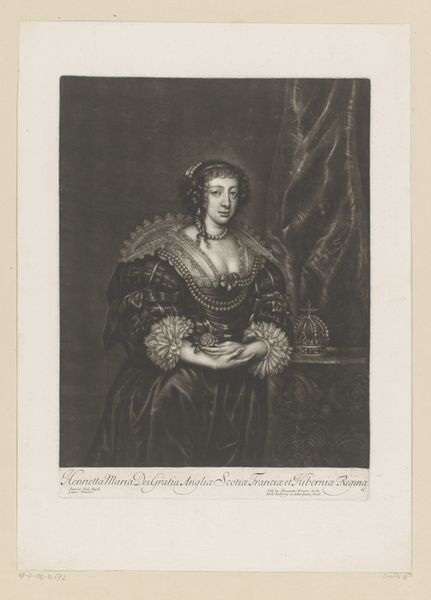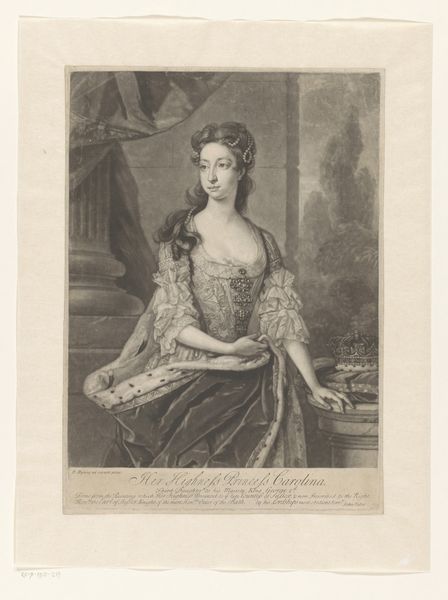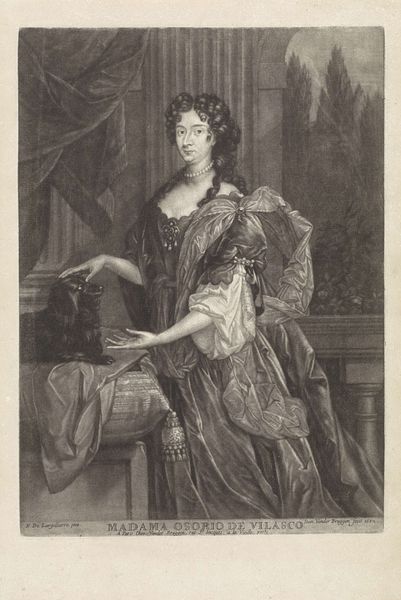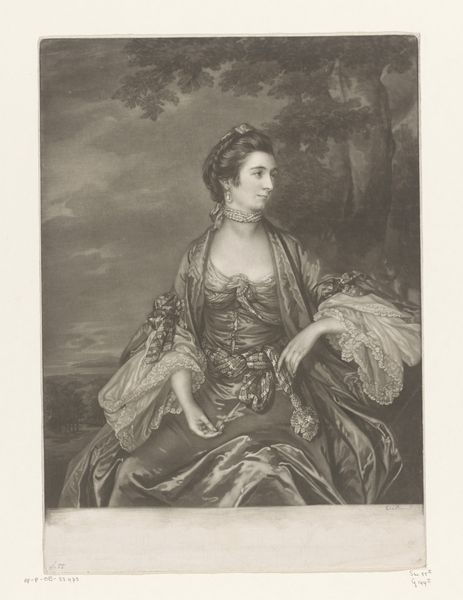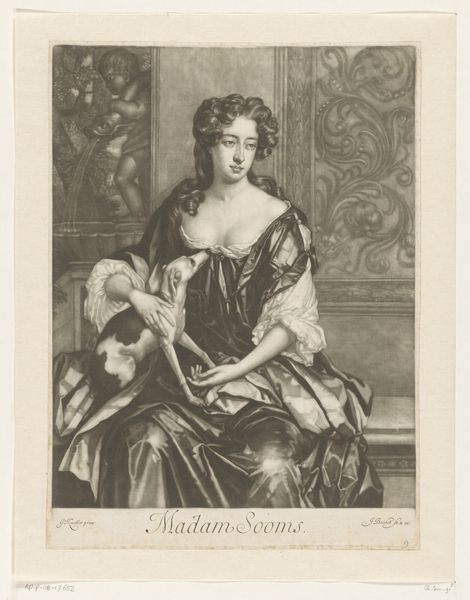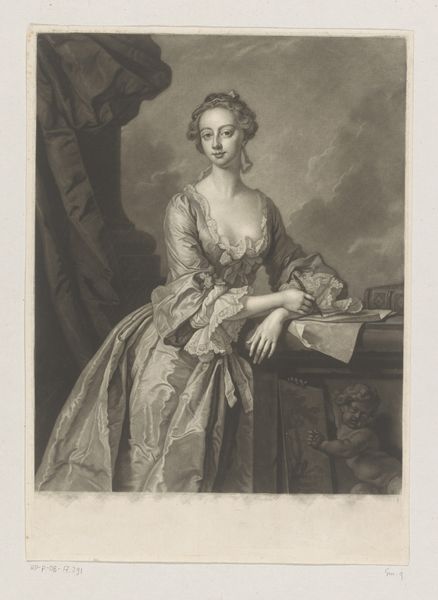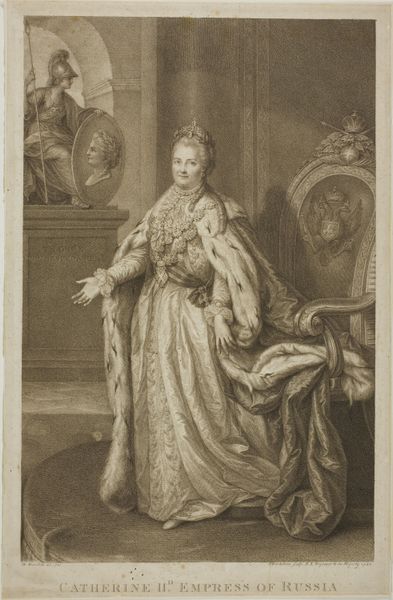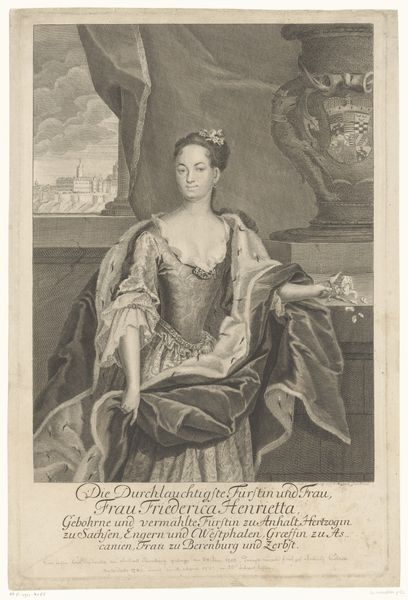
engraving
#
baroque
#
charcoal drawing
#
figuration
#
line
#
history-painting
#
academic-art
#
engraving
#
realism
Dimensions: height 368 mm, width 271 mm
Copyright: Rijks Museum: Open Domain
Curator: Here at the Rijksmuseum, we have a compelling engraving entitled "Portret van Marie Desjardins" dating from 1680 to 1703. The artist is Pierre Drevet. Editor: There's a striking stillness to it, almost like a photograph. The subject’s gaze, her controlled posture… everything is so measured. Curator: Indeed. Drevet, primarily known for his engraving work, made this portrait using academic art style principles. Consider the social context: Marie Desjardins was the wife of a prominent figure in the Royal Academy, evident in the inscription. Drevet likely sought patronage within that elite artistic and intellectual circle. Editor: Look at the contrast though! The clean, linear precision of her dress against the softer lines of her face; the structured background compared to the more free-flowing elements, like the plants she’s holding. How do you read this? Curator: The composition, balanced yet asymmetrical, uses line and light to emphasize Marie's status. Engraving itself was a meticulous and time-consuming craft. These reproductive prints played a vital role in circulating images and reinforcing social hierarchies through visual representation and her family social role at that moment. Editor: So, her pose and finery aren’t just surface details. You see them as clues of a labor dynamic. It tells me how important it was for someone in Marie's position to uphold very visible symbols of success, so perhaps how women were treated based on appearance. Curator: Precisely. It is both an individual portrayal, an official statement, and a document of economic status. Drevet showcases his expertise through skillful mark-making—but his artistry also served the interests of a privileged class. Editor: Considering Drevet's choice of such austere lines to define the female form and convey character, you could almost describe it as a precursor to modern sensibilities, if perhaps it did not still convey a great deal of deference. Curator: In closing, Drevet's print prompts us to reflect on the symbiotic relationship between art, labor, and the social milieu of the late 17th and early 18th centuries. Editor: It definitely enriches the image, underscoring that this portrait, seemingly formal, whispers intriguing stories of a particular time.
Comments
No comments
Be the first to comment and join the conversation on the ultimate creative platform.
